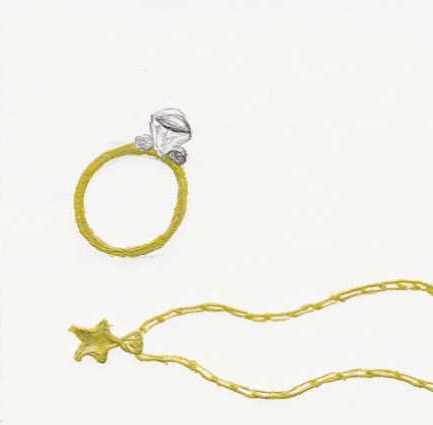|
Need sunshine ? Warmth?  just click! Make a small star |
Some greens?
|
Need a hammer? A golden ring?  just click! Make a massive star |
Do you know you are made of star's stuff ? Do you know that the
calcium in your bones was produced by powerful nuclear reactions in
a big-star interior, several billion years ago ?
The iron which colors the Red Rocks of Arizona, and of the planet Mars, comes
from ancient supernovae that exploded long before our solar system was born.
Here is how the story goes. In the Big Bang, at the dawn of
our Universe, all the matter was created basically at once. But,
it mostly consisted of hydrogen and helium atoms. So, where did
the variety of chemical
elements that populate the periodic table come from ?
To discover the answer, we must go back to when the first stars were born.
A star is a powerful nuclear energy furnace, which turns on when
a huge cloud of gas and dust in the interstellar space condenses and collapses
under its own weight. Then the star shines bright. The inner
combustion (nuclear fusion) not only releases light and energy,
it transforms the primordial "fuel" (hydrogen and helium) into
other chemical elements, such as Silicon, Nitrogen, Carbon, Oxygen.
But not all stars burn and produce chemical elements in the same way
or in the same amounts.
Which elements does a star produce? How much of them? How
long does it take? It all depends on the mass of the star.
CLICK HERE for a more detailed description of the life cycle of stars.
At the end of its life, when the fuel is all burned and no more reactions
can take place, different things can happen to our star,
again, depending on how massive it was.
In some cases, part of the processed elements gets dispersed into the
vast space, to form new clouds of gas and dust. Such clouds
will form new stars (which in turn will produce different chemical elements...)
and their planets, including life-supporting planets like our own Earth.
Here you can watch what happens throughout a star's life.
First, choose the mass of your star:
smaller than our Sun ? or, perhaps, five times larger? or fifty times larger?
Click below to "make your own star", watch it evolve,
and learn which chemical elements are produced at the end of your star's life.
|
Need sunshine ? Warmth?  just click! Make a small star |
Some greens?
|
Need a hammer? A golden ring?  just click! Make a massive star |
Interested? Want to learn a bit more about stellar evolution?
CLICK HERE.
For some recent discoveries about supernova remnants, massive stars, or planetary
nebulae, and more, search the
FUSE Science Summaries page.
Also, if you want to read
some of the new facts that astronomers found out
about massive stars with the FUSE satellite, and with Hubble,
click here
CREDITS: The animations in this activity were developed in collaboration with the Maryland Science Center; an interactive exhibit was also derived from this story, and it is now visible at JHU during the 'physics fair' events.